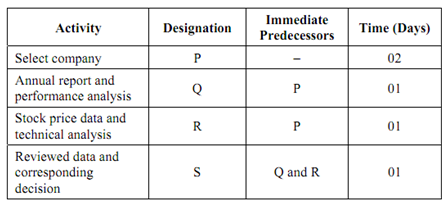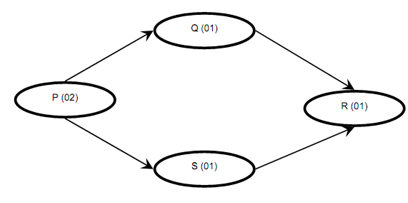Activity Sequence and Network Formation:
The next step is to recognize the required sequence of activities identified in the previous step in a way that it satisfies the required precedence constraints. The activities that are to be performed before certain activity is said to be in its precedence. Further, a network is to be drawn showing the precedence relationship among the activities. Any project may be represented by an arrow diagram in which arrangement of arrows mentions the sequence of individual jobs and their dependence on other jobs. Arrow diagram consists of two basic elements: activities and events. In an arrow diagram, an activity is a time consuming task and is represented by an arrow. An event is considered as instantaneous, that means a point in time and is represented by a circle. 1 and 2 are events while arrow illustrated is activity A as illustrated in Figure.

Figure
Basically there are two kinds of activities viz. sequential and parallel. Activities occurring in the same path are sequential and are directly dependent on each other, whereas, parallel activities on different paths are independent of one another as shown in Figure.

Figure
In network diagram there can be certain dummy activities defined as the activities that consume no time; they are of zero duration and are utilized solely for convenience in network construction. It is represented by dotted lines as illustrated in Figure. Dummy activities are useful in avoiding more than one activity with same beginning and end event.

Figure
The below given Figure shows the precedence relation of the activities given in Table. The network diagram are made using the basic networks given in Appendix A
Table: The Required Sequence of Activities


Figure: Precedence Relationship among the Activities given in Table